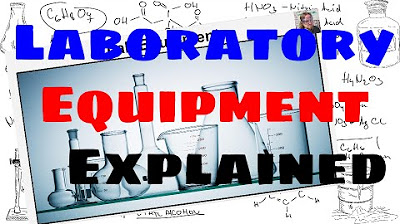Physical Vs. Chemical Changes - Explained
Summary
TLDRIn this educational video, Mr. Millings explores the distinction between physical and chemical changes. He illustrates physical changes as alterations in form without altering the substance's chemical identity, using examples like grinding peanuts into butter, folding paper into an airplane, and melting ice. Chemical changes, in contrast, involve a transformation in the substance's identity, such as fermentation of sugar to alcohol, oxidation of iron to rust, and electrolysis of water into hydrogen and oxygen. The video clarifies that all chemical changes include physical changes, but not all physical changes involve chemical alterations.
Takeaways
- 📚 Physical changes involve alterations in a substance's physical form without changing its chemical identity, such as grinding peanuts into peanut butter.
- 📈 All changes in the state of matter, like melting ice into water, are considered physical changes.
- 🔍 Physical changes are not necessarily accompanied by chemical changes, as seen when copper is turned into wire, maintaining its chemical composition.
- 🔬 Chemical changes result in a new substance with a different chemical makeup, like fermentation turning sugar into alcohol.
- 🌿 Oxidation, such as an iron nail rusting, is an example of a chemical change where the iron combines with oxygen to form a new substance.
- 🔥 Combustion, like burning logs, is a chemical change that alters the chemical composition of the material.
- 💧 Electrolysis of water, which splits it into hydrogen and oxygen gas, is a chemical change creating new substances.
- 🧀 Souring of milk is a chemical change as it breaks down into different substances over time.
- 🌡️ Sublimation of dry ice, turning it from a solid to a gas without becoming a liquid, is a physical change in state.
- 🍺 Fermentation of sugar into alcohol is a chemical change, transforming one chemical substance into another.
- 🌫️ Evaporating water, turning it into water vapor, is a physical change in state of matter.
Q & A
What is the main difference between physical and chemical changes?
-Physical changes involve alterations in the physical form or state of a substance without changing its chemical identity, while chemical changes involve a transformation that results in a new substance with a different chemical makeup.
Can you give an example of a physical change from the script?
-Grinding peanuts into peanut butter is an example of a physical change because the peanuts are simply changed in form, not in chemical composition.
What is the significance of the term 'ductility' mentioned in the script?
-Ductility refers to the property of a metal that allows it to be stretched into a wire. In the script, turning a copper bar into copper wire demonstrates the ductility of copper.
How does the script explain the melting of ice as a type of change?
-The melting of ice into liquid water is described as a physical change because it's a change in state from solid to liquid, but the chemical composition (H2O) remains the same.
What is the key takeaway from the script about changes in the state of matter?
-All changes in the state of matter, such as from solid to liquid or liquid to gas, are considered physical changes because they do not involve a change in the chemical identity of the substance.
According to the script, are all physical changes accompanied by chemical changes?
-No, the script clarifies that not all physical changes are accompanied by chemical changes. Physical changes can occur without altering the chemical composition of a substance.
What is an example of a chemical change given in the script?
-The fermentation of sugar into alcohol is an example of a chemical change because it results in a new substance with a different chemical composition.
What process is described in the script when an iron nail turns into a 'Rusty Nail'?
-The process described is oxidation, where the iron nail reacts with oxygen to form iron oxide, commonly known as rust, indicating a chemical change.
How does the script illustrate the concept of combustion as a chemical change?
-The script uses the example of burning logs, where the chemical composition of the logs changes due to the combustion process, resulting in new substances.
What is electrolysis, and how does it relate to chemical changes according to the script?
-Electrolysis is the process of passing an electric current through water to separate hydrogen from oxygen, creating hydrogen gas and oxygen gas. The script states that this is a chemical change because it transforms one substance into two different substances.
What is the script's final point about the relationship between physical and chemical changes?
-The script concludes that while all chemical changes are accompanied by physical changes, the reverse is not true; not all physical changes involve chemical changes.
Outlines

This section is available to paid users only. Please upgrade to access this part.
Upgrade NowMindmap

This section is available to paid users only. Please upgrade to access this part.
Upgrade NowKeywords

This section is available to paid users only. Please upgrade to access this part.
Upgrade NowHighlights

This section is available to paid users only. Please upgrade to access this part.
Upgrade NowTranscripts

This section is available to paid users only. Please upgrade to access this part.
Upgrade NowBrowse More Related Video

The Four States of Matter - Explained

Lab Equipment - Explained

3. Gr 11 Life Sciences - Population Ecology - Theory 3 Mark Recapture Method

4. Gr 11 Life Sciences - Population Ecology - Worksheet 1

PENJASKES KELAS X - SOFTBALL

Introduction to Culture [AP Human Geography Review Unit 3 Topic 1]

Menentukan Mr ( massa molekul relatif )
5.0 / 5 (0 votes)